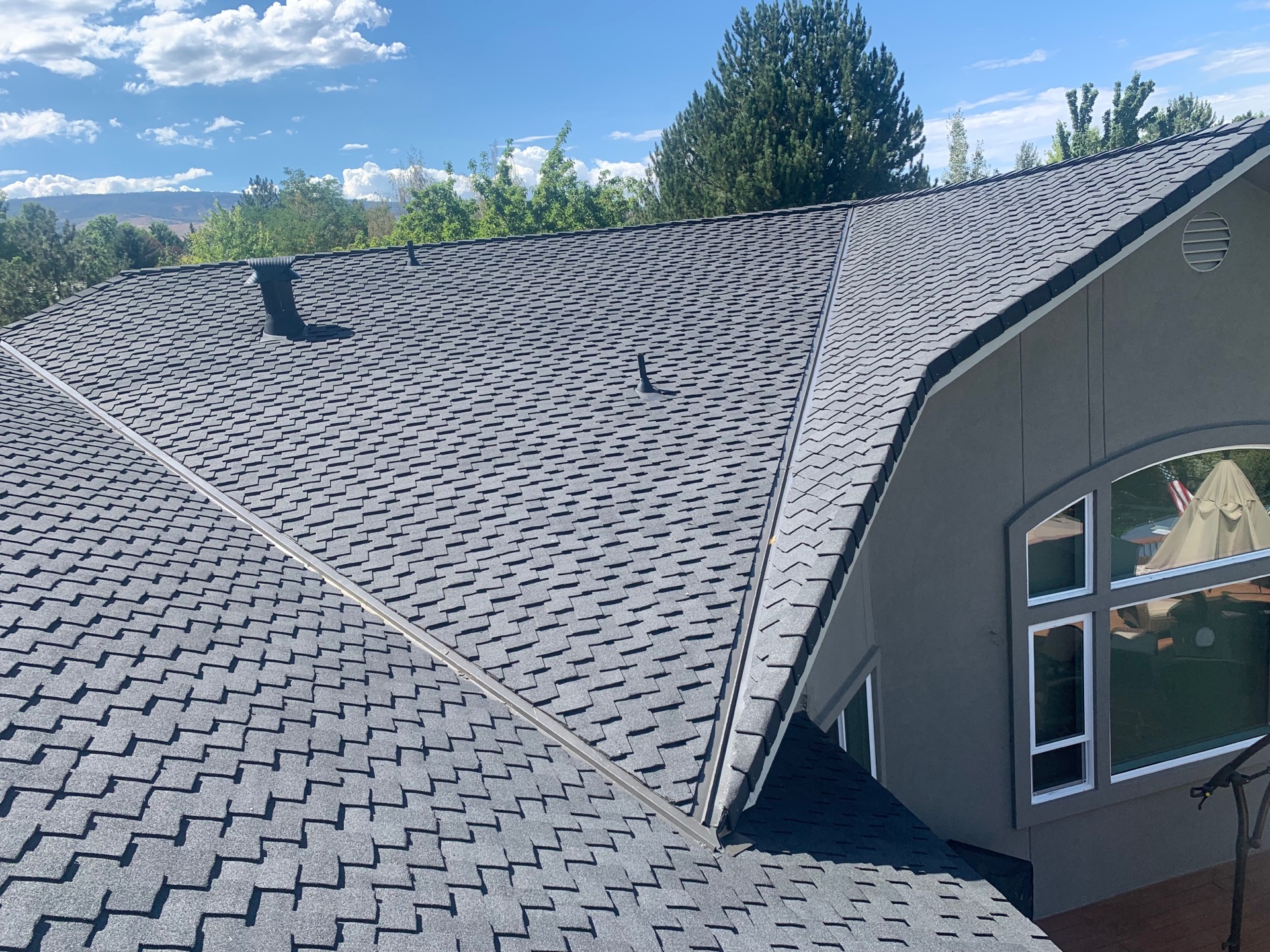Comparing Prices Among Roofing Companies in Gainesville Florida
Comparing Prices Among Roofing Companies in Gainesville Florida
Blog Article
Ideal Practices for Ensuring Appropriate Roof Covering Ventilation
A well balanced consumption and exhaust vent ratio, commonly 1:300, plays an essential role, with consumption vents preferably placed at the lower edge of the roof for great air entrance and exhaust vents at the top for cozy air leave. Keeping insulation away from vents is essential to stop airflow restriction.
Understand Ventilation Fundamentals
Appropriately recognizing air flow basics is important for making certain the long life and efficiency of roof. Efficient air flow minimizes moisture buildup and temperature level extremes in the attic room, both of which can cause substantial architectural damages over time. A well-ventilated roofing system aids in protecting against common issues such as mold development, timber rot, and ice dams, which can compromise the integrity of the roof products and the underlying structures.
The primary goal of ventilation is to help with the movement of air, permitting a constant exchange between the outdoor and indoor atmospheres. This balance is accomplished via a combination of intake and exhaust vents that interact to maintain optimal airflow. Consumption vents, usually located along the soffits or eaves, enable fresh air to get in the attic room room, while exhaust vents, usually located at or near the roofing system ridge, enable hot, moist air to escape.
Trick elements influencing the effectiveness of roof air flow consist of correct positioning, adequate sizing, and guaranteeing that both consumption and exhaust vents are unblocked. Regular assessment and maintenance are essential to determine potential blockages, damage, or inefficiencies in the air flow system, thereby protecting the roofing system's performance and longevity.
Sorts Of Roofing Vents
Roof vents play a vital function in maintaining effective attic room ventilation and, by extension, the general health of the roof system. Different types of roof covering vents are available, each with special benefits tailored to certain roofing demands.

Soffit vents are installed under the eaves and work in tandem with roofing system vents to guarantee a balanced consumption and exhaust system. By permitting cooler air to go into from below, soffit vents promote the expulsion of warm air through upper vents. Gable vents, situated on the exterior walls of the attic room, offer an additional reliable solution, especially in homes with gable roofs.
Assess Your Present Air Flow

Following, consider the age and condition of your roof covering materials and air flow elements. Older systems may not follow existing building regulations or might have weakened gradually, reducing their effectiveness. Conduct a detailed examination to recognize any indicators of wear and tear, such as rust, damage, or spaces that could jeopardize the system's performance.
In addition, gauge the attic temperature and humidity degrees. Heats and moisture can indicate insufficient air flow - roofing moved here companies. Utilize a hygrometer and thermostat to obtain precise analyses, contrasting them with outdoor problems. Relentless discrepancies suggest possible issues that need resolving.
Setup Best Practices
Effective setup of roof air flow systems is extremely important for making sure optimum performance and long life. Appropriate setup starts with recognizing the specific ventilation requirements of the roof and the structure it covers. This involves determining the right proportion of intake to wear down vents, typically adhering to the 1:300 policy, which stipulates one square foot of ventilation for every 300 square feet of attic room floor area.

The placement of vents is similarly crucial. Consumption vents ought to be mounted at the roof covering's lower side, frequently in the soffits, to enable trendy air to enter. Exhaust vents, on the various other hand, need to be installed near or at the roofing's peak to help with the exit of cozy, moist air. This produces a natural airflow that assists keep temperature and dampness equilibrium within the attic area.
Seal all air vent connections carefully to protect against air leaks and potential water seepage. Usage top quality materials and comply with manufacturer standards to make certain resilience and efficiency. In addition, integrating ridge vents with baffles can substantially improve air flow efficiency by avoiding wind-driven rain and snow from going into the attic.
Inevitably, precise installation of roof ventilation systems reduces prospective problems such as mold and mildew growth, ice dams, and structural damage, ensuring the roof covering's stability and the structure's overall wellness.
Routine Maintenance Tips
Uniformity in maintenance methods is fundamental to making certain the long-term efficiency of roof covering ventilation systems. During these evaluations, ensure that vents are complimentary of debris, nests, and other obstructions that might impede air flow.
Make use of a soft brush or a vacuum cleaner to remove dirt and official statement debris from intake and exhaust vents. Be careful not to harm the air vent screens or louvers throughout the procedure.
Appropriate insulation is equally vital. Make sure that attic room insulation does not obstruct the vents, as this can severely restrict air flow. If any insulation has changed or resolved, rearrange or change it to keep an effective barrier.
Last but not least, change any harmed or missing out on parts promptly. Damaged vents, cracked shingles, or scrubby flashing can all add to poor air flow and should be addressed right away. Normal upkeep makes sure that the roof ventilation system functions optimally, thus expanding the life-span of the roof covering itself.
Verdict
Ensuring proper roof you can try these out ventilation is paramount for keeping the performance and sturdiness of a roof. Adherence to the 1:300 consumption and exhaust air vent proportion, coupled with the critical placement of vents, is important. Regular biannual inspections, particles cleaning, and guaranteeing insulation does not obstruct airflow are essential methods. Implementing these finest techniques will cultivate a well-ventilated roof, consequently mitigating possible issues associated to moisture accumulation and too much warm, inevitably prolonging the roofing system's life-span.
A balanced consumption and exhaust vent ratio, generally 1:300, plays a pivotal duty, with intake vents ideally put at the lower side of the roof for trendy air entry and exhaust vents at the optimal for cozy air exit. Intake vents, normally situated along the soffits or eaves, allow fresh air to enter the attic area, while exhaust vents, typically positioned at or near the roof covering ridge, make it possible for hot, damp air to get away.
Soffit vents are mounted under the eaves and job in tandem with roofing vents to make certain a balanced intake and exhaust system. By allowing cooler air to go into from below, soffit vents promote the expulsion of warm air via upper vents. Adherence to the 1:300 consumption and exhaust air vent proportion, paired with the critical placement of vents, is necessary.
Report this page